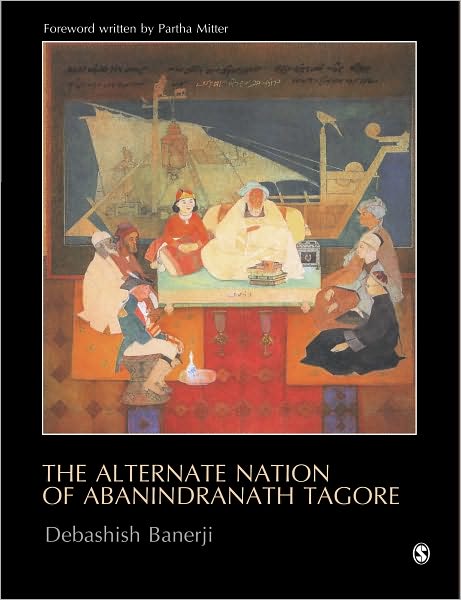 A revisionary critique of the art of Abanindranath Tagore (1871-1951), the founder of the national school of Indian painting, popularly known as the Bengal School of Art. The book categorically argues that the art of Abanindranath, which developed during the Bengal Renaissance at the turn of the 19th/20th centuries, was not a normalization of nationalist or orientalist principles, but a hermeneutic negotiation between modernity and community. It establishes that Abanindranath’s art-embedded in communitarian practices like kirtan, alpona, pet-naming, syncretism, and storytelling through oral allegories-sought a social identity within the inter-subjective contexts of locality, regionality, nationality, and trans-nationality. Abanindranath is presented here as a creative agent who, through his art, conducted a critical engagement with post-Enlightenment modernity and regional subalternity.
A revisionary critique of the art of Abanindranath Tagore (1871-1951), the founder of the national school of Indian painting, popularly known as the Bengal School of Art. The book categorically argues that the art of Abanindranath, which developed during the Bengal Renaissance at the turn of the 19th/20th centuries, was not a normalization of nationalist or orientalist principles, but a hermeneutic negotiation between modernity and community. It establishes that Abanindranath’s art-embedded in communitarian practices like kirtan, alpona, pet-naming, syncretism, and storytelling through oral allegories-sought a social identity within the inter-subjective contexts of locality, regionality, nationality, and trans-nationality. Abanindranath is presented here as a creative agent who, through his art, conducted a critical engagement with post-Enlightenment modernity and regional subalternity.The Alternate Nation of Abanindranath Tagore
 A revisionary critique of the art of Abanindranath Tagore (1871-1951), the founder of the national school of Indian painting, popularly known as the Bengal School of Art. The book categorically argues that the art of Abanindranath, which developed during the Bengal Renaissance at the turn of the 19th/20th centuries, was not a normalization of nationalist or orientalist principles, but a hermeneutic negotiation between modernity and community. It establishes that Abanindranath’s art-embedded in communitarian practices like kirtan, alpona, pet-naming, syncretism, and storytelling through oral allegories-sought a social identity within the inter-subjective contexts of locality, regionality, nationality, and trans-nationality. Abanindranath is presented here as a creative agent who, through his art, conducted a critical engagement with post-Enlightenment modernity and regional subalternity.
A revisionary critique of the art of Abanindranath Tagore (1871-1951), the founder of the national school of Indian painting, popularly known as the Bengal School of Art. The book categorically argues that the art of Abanindranath, which developed during the Bengal Renaissance at the turn of the 19th/20th centuries, was not a normalization of nationalist or orientalist principles, but a hermeneutic negotiation between modernity and community. It establishes that Abanindranath’s art-embedded in communitarian practices like kirtan, alpona, pet-naming, syncretism, and storytelling through oral allegories-sought a social identity within the inter-subjective contexts of locality, regionality, nationality, and trans-nationality. Abanindranath is presented here as a creative agent who, through his art, conducted a critical engagement with post-Enlightenment modernity and regional subalternity.






